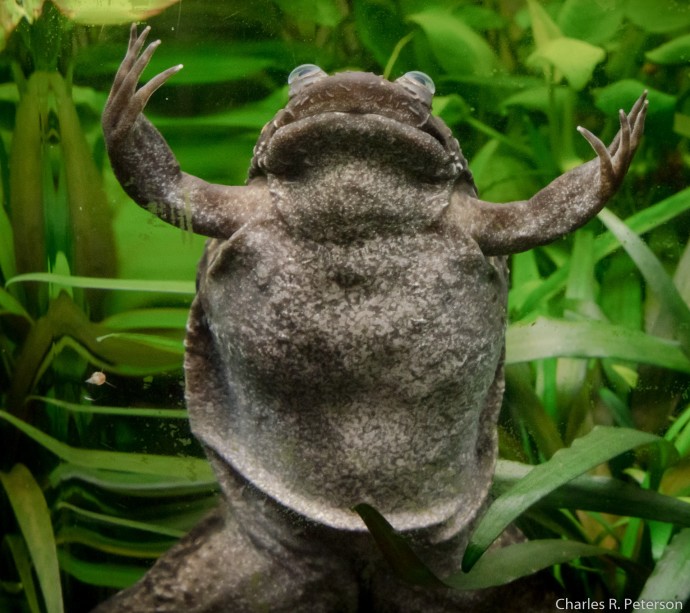Research provided by the Davidson Institute of Science Education
The brain is the body’s main energy consumer, requiring a constant supply of oxygen for its activity. A person weighing 63 kg consumes an average of 250 milliliters of oxygen per minute, under standard atmospheric pressure. In humans, holding one’s breath for a few minutes is sufficient to cause irreversible damage to the brain and the nerve cells within it. In a new study researchers were able to provide frog tadpoles with an alternative oxygen source - using unicellular algae that were placed inside their brains.
The air we breathe contains 21% oxygen, and most of the creatures living currently on Earth use this oxygen to produce most of the energy they require. It is therefore astounding to realize that up to a billion years ago there was almost no oxygen in Earth’s atmosphere. It began to accumulate only after the appearance of the first photosynthetic organisms.
During the process of photosynthesis, an organism absorbs carbon dioxide from the air and uses sunlight and water to produce energy in the form of sugars. The by-product of this process is oxygen, which is released into the Earth’s atmosphere. For millions of years, photosynthetic organisms, which initially included mainly cyanobacteria and unicellular algae, have slowly changed the composition of our world's atmosphere. Gradually, as more oxygen accumulated in the air, organisms capable of exploiting it in order to produce energy through the process of respiration began to appear. Today, most of the living organisms around us, including ourselves, require a constant supply of oxygen to survive. Animals absorb oxygen from their environment using their lungs, gills or skin.
<strong>An independent oxygen factory</strong><br><br>
According to a report in The Scientist, the study was conceived during a conversation that took place over lunch between neurobiologist Hans Starka of the Ludwig Maximilian University of Munich (LMU), and fellow LMU plant biologist and unicellular algae researcher Jörg Nickelsen. The two decided to combine forces in order to examine whether unicellular algae could provide oxygen supply to the brain. In order to test their hypothesis, the researchers used tadpoles of the widely-used African Clawed Frog (Xenopus laevis), injecting either unicellular green algae or photosynthetic cyanobacteria into their hearts. Since the tadpoles’ bodies are mostly transparent, the researchers were able to follow the distribution of the microorganisms within the tadpoles’ vascular system, from the blood vessels to the brain, with relative ease.

In order to test whether the algae can actually provide oxygen to a tadpole’s brain, the researchers reduced the oxygen content in the water tank, using continuous ventilation with nitrogen, and inserted electrodes into the tadpoles’ brains to monitor their activity and oxygen levels. Similar treatments were applied to a group of tadpoles not injected with algae and to an additional group of tadpoles injected with genetically modified algae that were unable to produce oxygen.
Under darkness conditions, and in the absence of oxygen, brain activity in all tadpoles was completely abolished. Upon the introduction of light, the brains of tadpoles in both control groups remained unchanged, while the brains of tadpoles injected with active photosynthetic algae regained neuronal activity. No significant difference was found between the effect of unicellular green algae and that of cyanobacteria. It therefore appears that the photosynthesis performed by the algae did provide the brain with the required oxygen. When illumination was turned off once again, brain activity stopped, and was renewed again upon the re-introduction of light. The researchers also noted that the effect of algae on brain activity was faster than the parallel effect achieved by bringing water oxygen levels back to normal, most likely since the algae supplied the oxygen directly to the brain, without involvement of the respiratory system.
Symbiotic interactions between vertebrates and algae have been found in nature in a certain species of salamanders (Ambystoma maculatum), whose eggs and mature tissues are intracellularly invaded by unicellular algae. However, this is the first time in which oxygen produced by algae was shown to be able to restore brain function in vertebrates.
While the discovery is intriguing, much doubt exists regarding its potential future application as treatment for the human brain. Unlike tadpoles, our bodies are not transparent, and it is hard to imagine how light could be introduced into our brains. In addition, there is currently no way to control the amount of oxygen the algae produce and an excess of oxygen can be toxic. Finally, significant concern exists that the presence of algae in our body may evoke a dangerous response by the immune system.
Nevertheless, research groups today are already testing the potential use of unicellular algae and photosynthesis to provide a solution to various diseases and conditions, such as lack of oxygen caused by respiratory failure and even as a supportive treatment for breast cancer. Current research into this field is still in its infancy and strictly limited to experiments in laboratory animals, such as mice and Zebrafish.
This research was first published at the Davidson Institute of Science Education.
